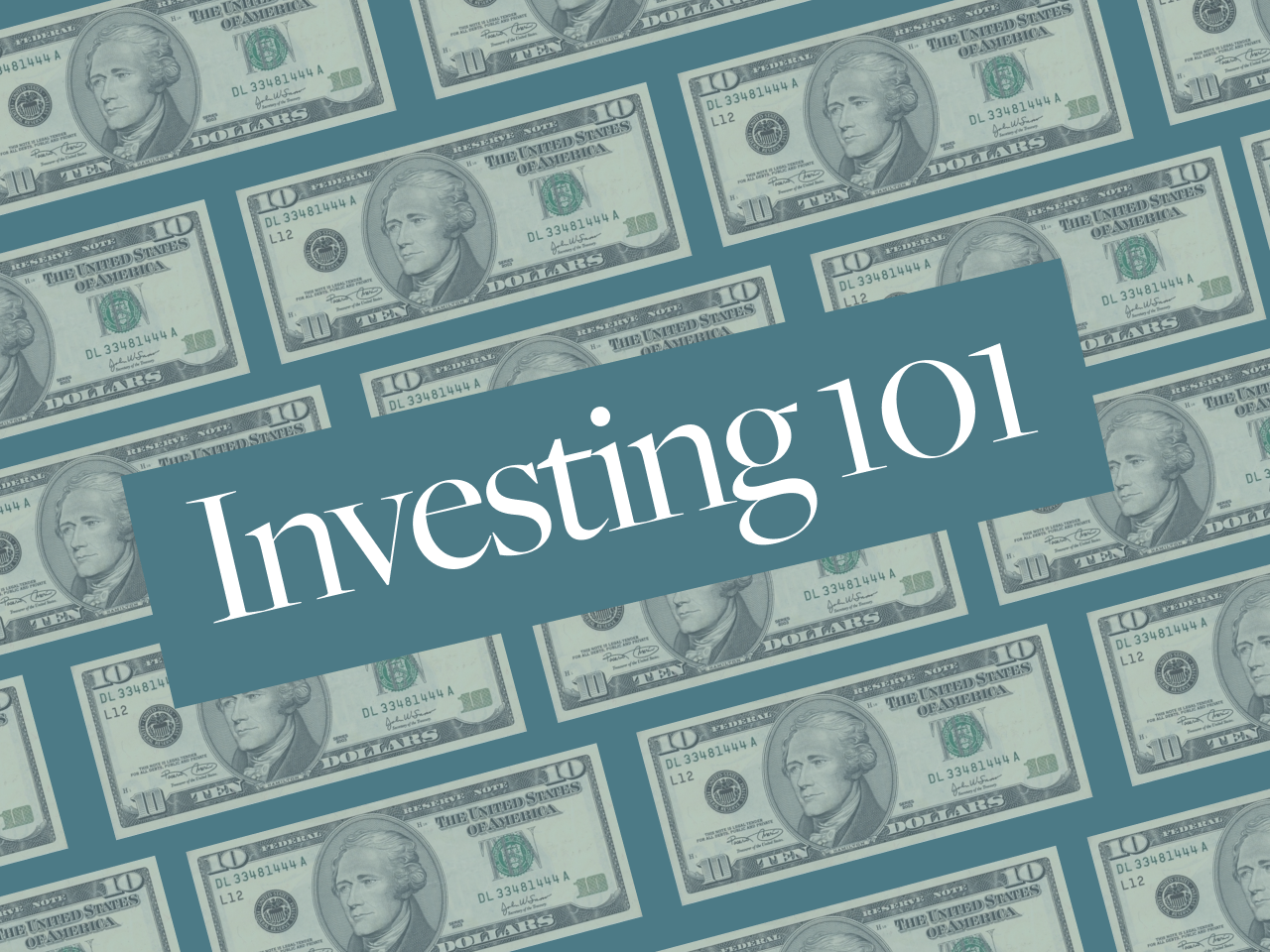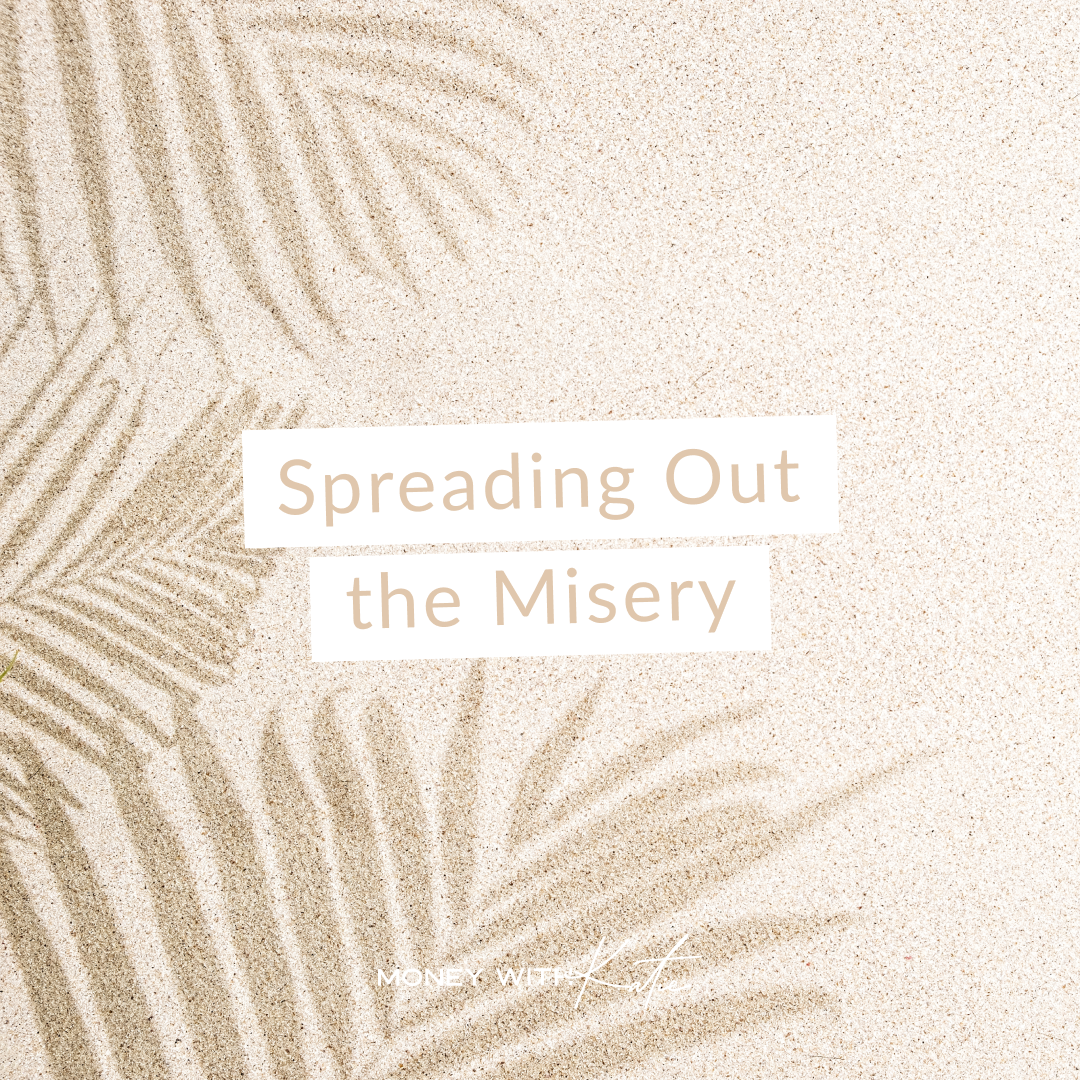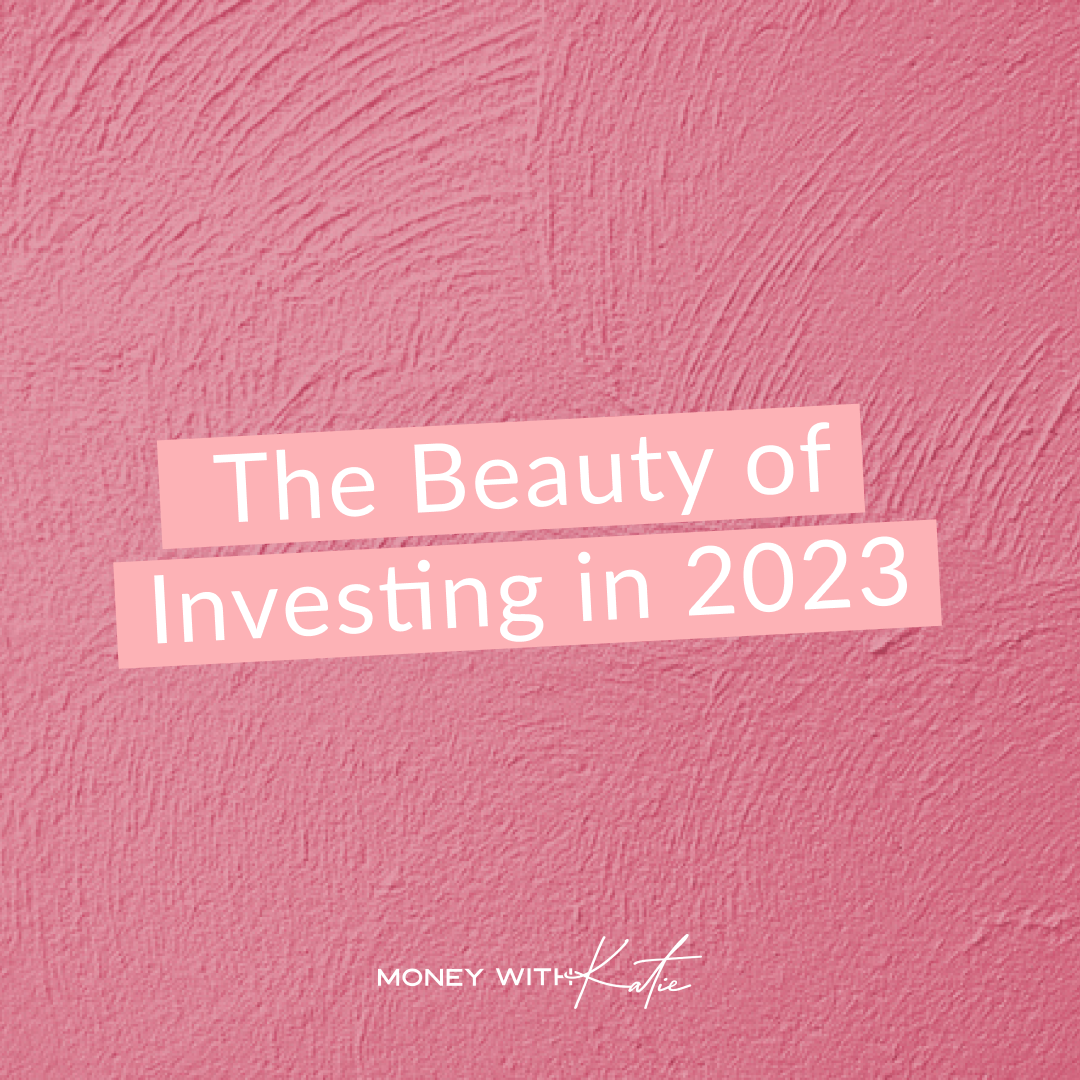4 Simple Index Fund Portfolios That Would’ve Beaten the Total Stock Market over the Last 25 Years
November 8, 2021
The Wealth Planner
The only personal finance tool on the market that’s designed to transform your plan into a path to financial independence.
Get The Planner
Subscribe Now
Biggest Finance Newsletter for Women
More than 10 million downloads and new episodes every Wednesday.
The Money with Katie Show
Recommended Posts
Ugh, I know — how annoying is that title? Nobody has a Magic 8 ball to predict what’ll happen in the future, but I have a slight issue with the idea that the only index fund you’ll ever need is the Total Stock Market.
And based on the funds I see constantly discussed on #PersonalFinanceInstagram, that’s the favorite by a long shot.
They’re all, for the most part, S&P 500 or Total Stock Market index funds, both of which are Large Cap funds.
As we’ve discussed before on this blog, Large Cap funds are popular for new investors (new = started in the last few years, like me) because the S&P 500 has absolutely ripped for the last decade or so — and when I say “ripped,” I mean trounced pretty much every other popular index.
I think there’s a bit of selection bias happening on the aforementioned personal finance Instagram, though, because most new investors are the same ones creating content on the platform. There’s not a great historical representation, in this reporter’s opinion, and it concerns me that we’re going to #influence a new wave of investors to be way overexposed to the popular Large Cap Crew at the expense of other indices.
Why owning only Large Cap Growth funds may not be ideal
The biggest companies have more or less already experienced their explosive growth.
The S&P 500 is made up of the 500 largest companies, but it’s not composed equally of the top 500 companies. Apple alone makes up around 6% of each share.
And while we all love our big boys (Facebook, Apple, Alphabet (Google), Microsoft, Amazon, Netflix, etc.), these companies are already huge. A lot of their explosive growth has already happened. It stands to reason that their biggest growth “rips,” so to speak, are behind them, and while they may maintain a steady clip of modest growth, it’s unlikely they’re going to double in size again.
As a former Alabama student (roll tide), I’d like to compare the S&P 500 to Alabama football. (Stick with me here, Rich Girls, we have to pander to our male readers occasionally.)
If it were possible to purchase stock in Alabama football and you had done so in the early 2000s before Saban took over in 2007, you’d have captured a ton of explosive growth as Alabama went on to become a dominant player in the college football world and won 6 national titles in 13 years.
Alabama is the S&P 500 of college football. But now? Now, its recent wins are priced into its stock value. You’re not going to get Alabama football for a bargain, because everyone’s expecting them to win now. The chances that they’ll become twice as good over the next 13 years would mean they’d have to win 12 of the 13 championships. As much as I’d love that, I don’t think it’s going to happen.
This is why investing heavily in Large Cap will typically net good results, but not the best results.
How much Large Cap is too much?
Well, if your entire portfolio is in the total stock market or S&P 500, it’s probably safe to say you’ve got too much. You’re not diversified outside of one type of index.
The likelihood that you’ll still get positive returns is good, of course, because you effectively own only “winners.” You own Alabama, Clemson, Ohio State… and the other teams in the top 10 whose names I don’t know because, well, I’m an Alabama fan. (Aren’t I the WORST?! LSU fans have left the chat.)
But you’re paying a premium for your winners because they’re the winners. We’re all expecting them to do well, so they cost more.
Having a diversified portfolio is like buying stock in European soccer teams and high school basketball teams, too. You never know where the next star will come from.
For our example today, we’re going to use a tool called Portfolio Visualizer.
It allows us to create hypothetical portfolios and compare them over any time period we want. For the sake of capturing recent history, we’ll be using a 25-year lookback today: an investing timeline from 1996 to 2021.
How a portfolio visualizer tool can help
How would a $10,000 investment in different indices fare over 25 years? Let’s find out. Here’s the tool I’m using — it’s pretty cool.
Note that I’m not setting the portfolios to rebalance over time, to reflect how most retail investors behave. Sure, you may be rebalancing to keep your asset allocation even when certain indices outperform others, but I’d venture a guess that you’re probably not doing that on your own (some roboadvisors do it for you, for the record).
For the purposes of our testing today, we’re going to look at combinations of a few different indices in different proportions:
-
U.S. Total Stock Market
-
U.S. Large Cap Growth
-
U.S. Small Cap Value
-
Global Stocks (excluding the U.S.)
-
Emerging Markets
-
U.S. Total Bond Market
I picked these because they’re amongst some of the popular indices, most of which get the shaft in favor of all-VTSAX/VTI (Total Stock Market) or all-VFIAX/VOO (S&P 500) portfolios.
Example index fund portfolios
We’re going to back-test six different portfolios — yippee!
-
100% U.S. Total Stock Market (if you only own VTSAX, this is what you have)
-
50% Large Cap Growth, 50% Small Cap Value (basically, polar opposites; an uncommon strategy)
-
90% U.S. Large Cap Growth, 10% U.S. Total Bond Market (what I’d consider a commonly repeated asset allocation suggestion for “S&P 500 + some bonds”)
-
50% U.S. Total Stock Market, 50% U.S. Total Bond Market (a more conservative 50/50 portfolio)
-
50% Large Cap Growth, 10% Emerging Markets, 25% Small Cap Value, 10% Global Stocks, 5% Bonds (veritable grab bag)
-
100% Small Cap Value (all bets on the little guy!)
How did I come up with these fake portfolios? Easy! I literally made them up! Just like many other long-term investors do. Chris Harrison voice: The answers may surprise you.
The results of adding some diversification
Let’s get to it, shall we? Here’s how our example portfolios fared over the last 25 years:
100% U.S. Total Stock Market
Our 100% Total Stock Market portfolio’s final balance in 2021 was $116,128. Not bad for a $10,000 investment, huh?
Your compound annual growth rate was about 10%, which is what we typically use (before inflation) to estimate our growth.
50% Large Cap Growth/50% Small Cap Value
If you liked 100% Total Stock Market portfolio’s results, you’re going to love 50% Large Cap Growth/50% Small Cap Value’s results!
This portfolio’s final balance in 2021 was $141,261, with a compound annual growth rate of almost 11%.
90% Large Cap Growth/10% Bonds
This portfolio’s final balance in 2021 was $136,049, with a compound annual growth rate of 10.7%.
Pause: Noticing anything?
So far, the portfolios that introduced a little diversification did better.
Let’s keep going.
50% U.S. Total Stock Market/50% U.S. Total Bond Market
This portfolio became $69,823, for a compound annual growth rate of 7.9%.
50% Large Cap Growth, 10% Emerging Markets, 25% Small Cap Value, 10% Global Stocks, 5% Bonds
This one? $122,443 with a compound annual growth rate of 10.3%.
100% Small Cap Value
$135,070 with a compound annual growth rate of 10.7%.
The big, obvious disclaimer that needs to be stamped here
Past performance is not indicative of future returns. Hypothetical examples are for illustrative purposes only.
But hey, if we’re going to judge the future by the past, we might as well use more than just the last 5 years, right?
The results, in order
-
Top performer: 50% Large Cap Growth, 50% Small Cap Value at 11% and $141,261 final balance
-
90% Large Cap Growth / 10% Total Bond Market at 10.7% and $136,049 final balance
-
100% Small Cap Value at 10.7% and $135,070
-
50% Large Cap Growth, 10% Emerging Markets, 25% Small Cap Value, 10% Global Stocks, 5% Bonds at 10.3% and $122,443 final balance
-
100% U.S. Total Stock Market at 10% and $116,028 final balance
-
50% U.S. Total Stock Market, 50% U.S. Total Bond Market at 7.9% and $69,823 final balance
There you have it: four simple index fund portfolios that would’ve beaten the total stock market over the last 25 years.
At the end of the day, you’d probably still be pretty happy that you turned $10,000 into $116,028 over 25 years if you only purchased Total Stock Market funds — but by simply buying two funds instead of one, you would’ve ended up with $141,261 (about 22% more).
Diversifying beyond the total stock market doesn’t mean you have to become a day trader — don’t confuse introducing 5% more effort with flipping a switch and catapulting yourself to the other end of the spectrum.
And while that was the portfolio that did the best over the last 25 years in this example, I’d almost be tempted to hitch my wagon to the one that came in fourth place: That one has the most diversified exposure of any of the example portfolios listed here.
Diversification is your friend. Use the Portfolio Visualizer tool to back-test different combinations like a sexy financial Rubik’s Cube, and thank me later.
You may also like these posts about investing…
Featured
Looking for something?
Search all how-to, essays, and podcast episodes.
Explore
While I love diving into investing- and tax law-related data, I am not a financial professional. This is not financial advice, investing advice, or tax advice. The information on this website is for informational and recreational purposes only. Investment products discussed (ETFs, index funds, etc.) are for illustrative purposes only. It is not a recommendation to buy, sell, or otherwise transact in any of the products mentioned. Do your own due diligence. Past performance does not guarantee future returns.
Money with Katie, LLC.
Terms & Conditions | Privacy Policy
This Site Was Built by Brand Good Time


![How to Contribute Thousands of Extra Roth Dollars Each Year: The Mega Backdoor Roth IRA [2025]](https://moneywithkatie.com/wp-content/uploads/2021/11/Frame37846-1.webp)

